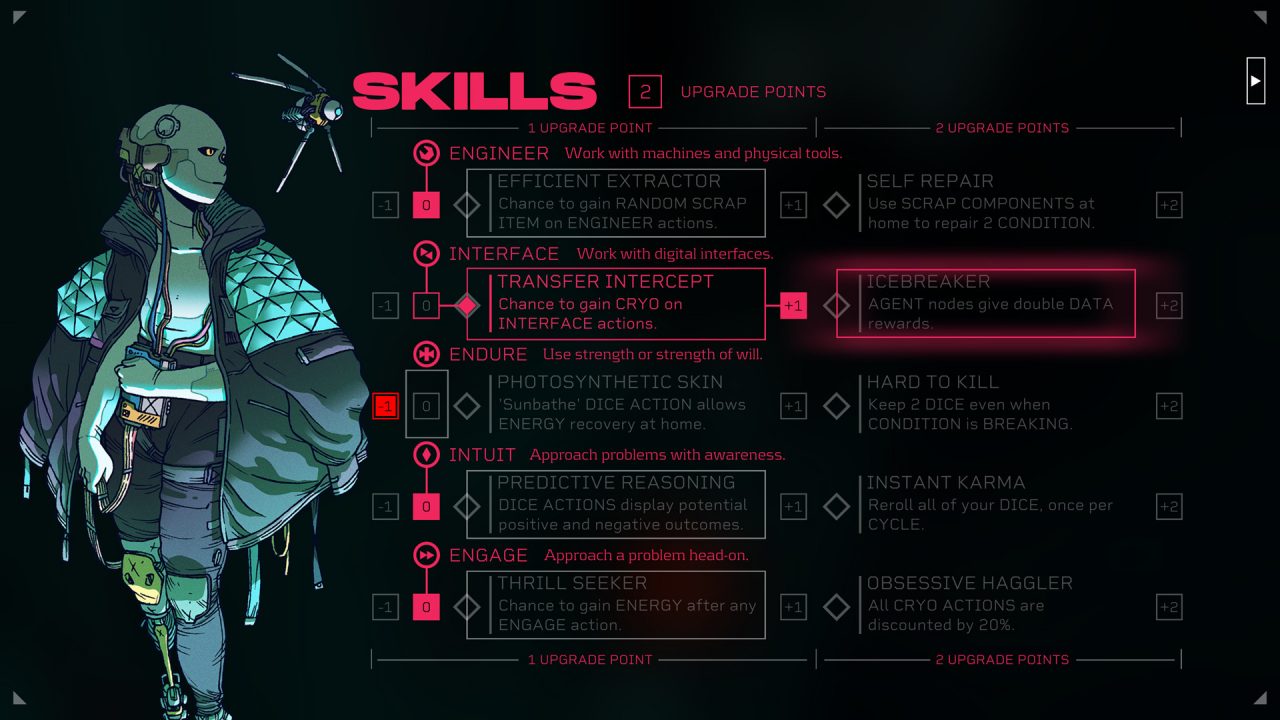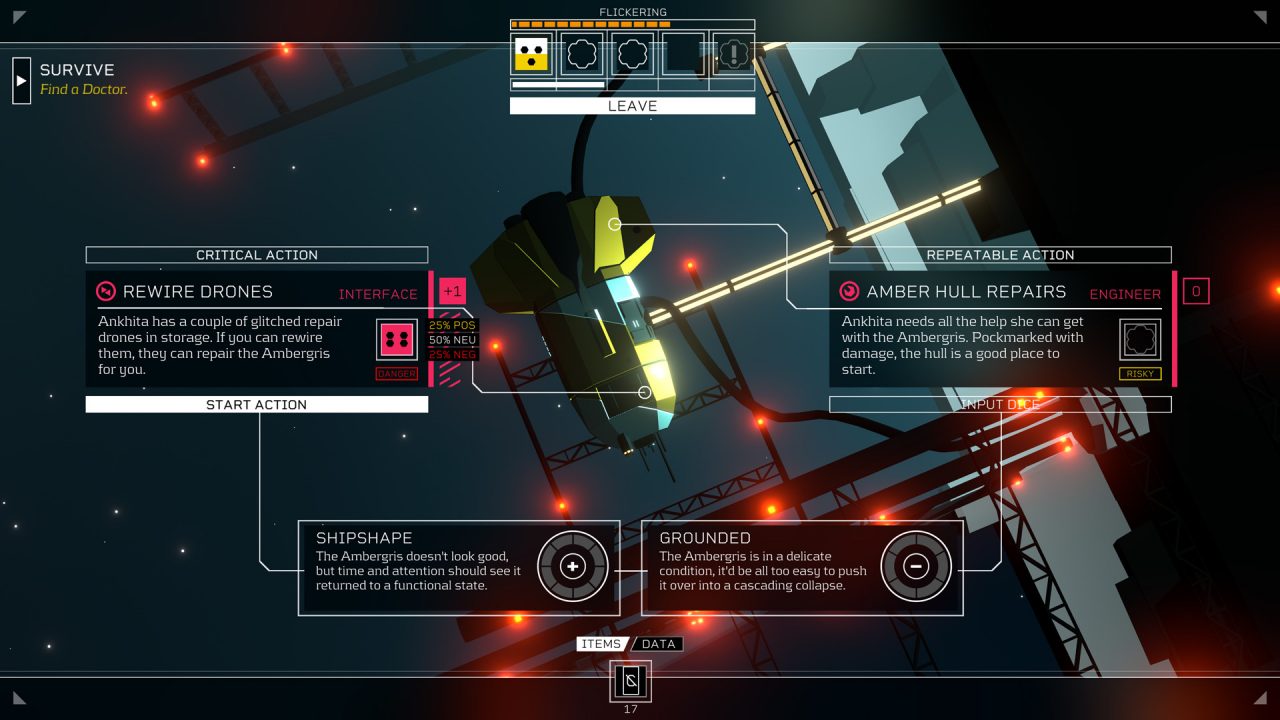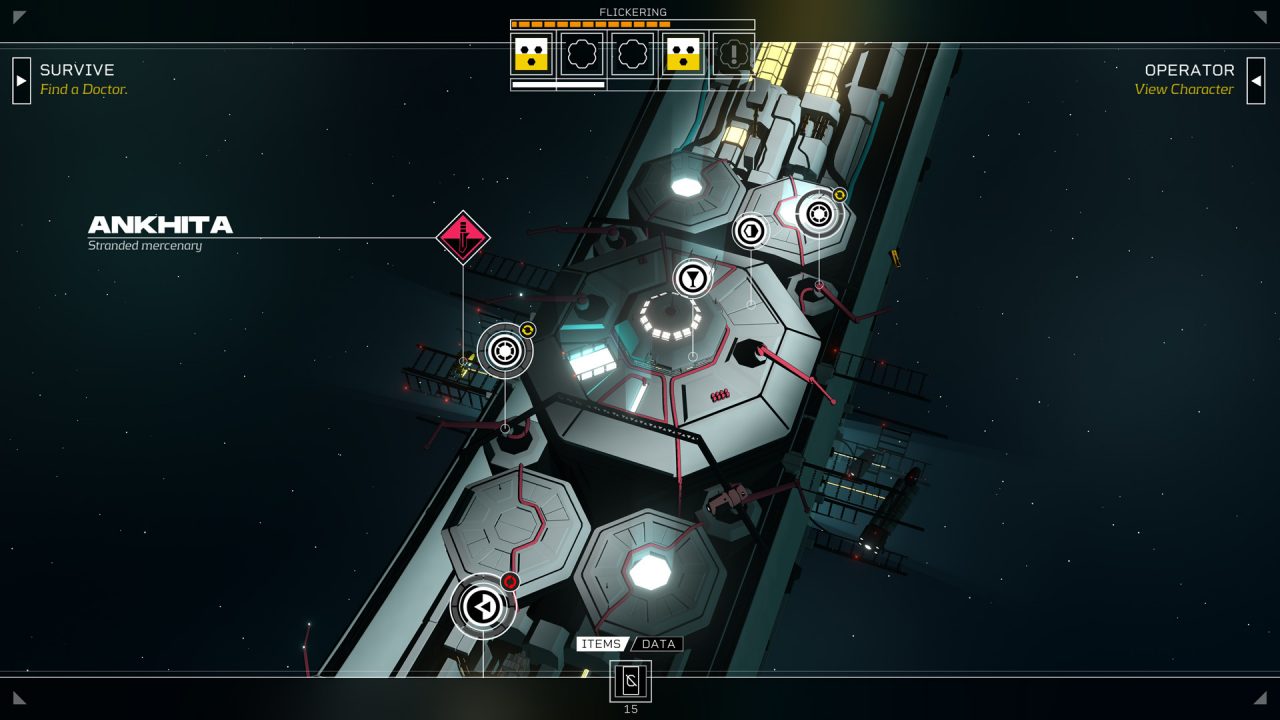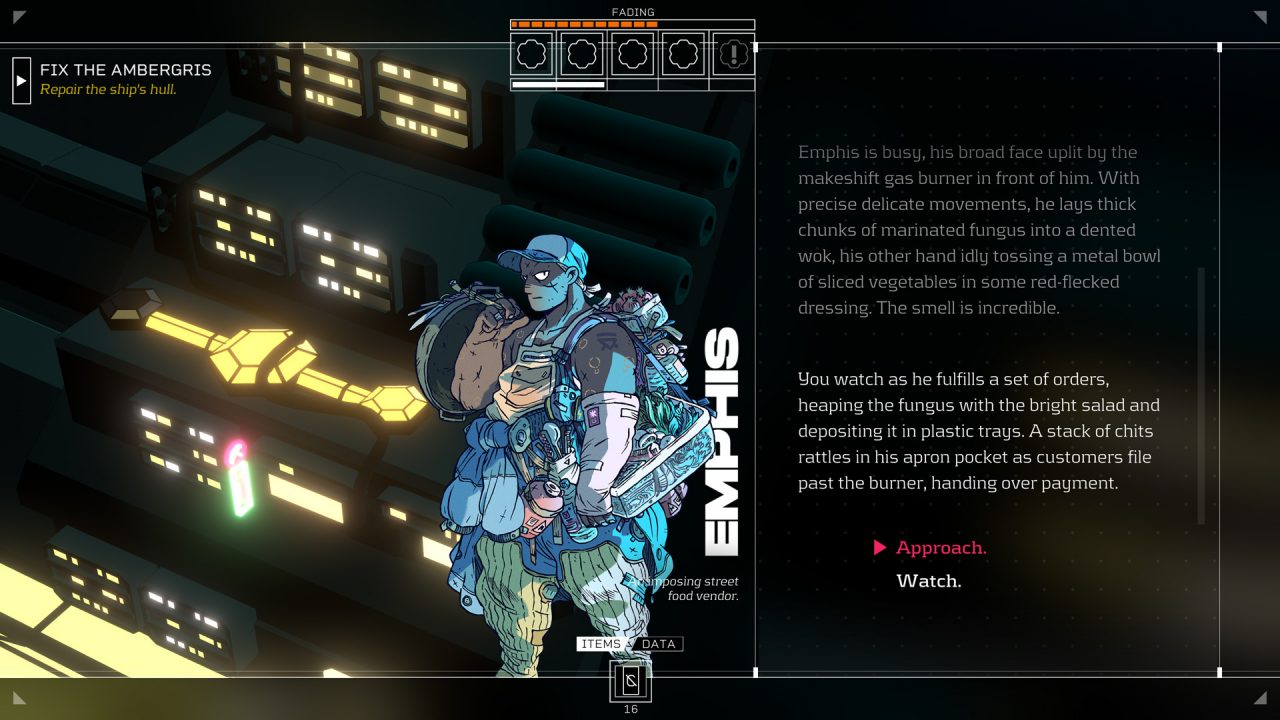Citizen Sleeper was one of last year’s most memorable sleeper hits. Now, it’s recently finished a run of three free DLC episodes that expand on the core game in a narratively interesting and fulfilling way. Citizen Sleeper is the second game from indie studio Jump Over the Age, which is (for the most part) a one-person show run by designer/writer/developer Gareth Damian Martin. Building off the legacy of games like Disco Elysium, it plays like a single-player, digitized tabletop RPG. It’s hard not to compare the two games in terms of their thoughtful incorporation of character-building systems, explicitly political narrative themes, and adamant lack of combat as a core player mechanic. But while peeling back Disco Elysium reveals layers upon layers of discoverable interactions, locations, and dialogue variations that most players will probably never see, Citizen Sleeper is much more modest and streamlined in its approach. That’s not a critique, mind you. Despite being similarly text-driven, it feels much breezier to play yet still maintains a satisfying sense of personal roleplaying and narrative weight.
Citizen Sleeper is authentic, original cyberpunk fiction in a compellingly interactive videogame form. You play as a “Sleeper,” a corporate-owned body running a digitized emulation of a person’s mind after your previous self signed away their autonomy and humanity. The Sleeper has only flickers of memory of their past life and is generally regarded as a non-human other by the different human and data-comprised NPCs you encounter throughout the game. Sleepers are thus neither quite human nor machine, navigating an awkward and uncertain liminal position between the two types of being. This nuanced avatar characterization colors most of the game’s storylines and interactions.

“Roleplaying in the Ruins of Interplanetary Capitalism”
From just looking at certain screenshots, it would be easy to mistake Citizen Sleeper for a visual novel. The player engages in plentiful, lengthy conversations with single NPCs—represented as beautifully drawn still images—while the story’s events are told in text rather than shown. Fortunately, the evocative cyberpunk prose manages to pull the player right into its world and quest scenarios. Cyberpunk literature can often feel more playfully disorienting than plainly descriptive when describing aspects of its worlds, and Martin’s writing manages an appropriate balance throughout the game. In one moment, you’re reading about a riot of exploited spaceship engineers, while another passage will capture the immaterial sensations of being caught up in a wave of pure data. Despite never seeing fleshed-out representations of the game’s spaces, the writing is imaginative and vivid enough to make you feel involved in whatever scene it’s describing. But Citizen Sleeper is still an RPG in the most historically literal sense.
As might be expected from a tabletop-inspired RPG, character building is central to the gameplay experience. There are three classes of Sleeper to choose from at the game’s beginning, each of which is proficient and deficient in one of the game’s five core skills. A Machinist gets an extra point for the Engineer skill, which means they work well with hardware and tools, but they suffer at Engage (i.e., asserting themselves in social situations). I played mainly as an Operator, who excels at the more programming-leaning Interface skill while lacking at physically challenging Endure actions. This certainly influenced what actions (and approaches to quests) I felt willing to take early on, but by about the mid-game, I built up my other stats enough that I was roleplaying mostly for flavor rather than as a designed necessity.
So how do actions work? Well, with dice rolls! Each in-game day (or “cycle”) will give you 1-5 dice rolls (each of which will have a 1-6 value for success) depending on your Sleeper’s Condition. Dice rolls can be distributed as you see fit and together make up the events of a single cycle. Condition points deplete every cycle by design—a Sleeper is built to slowly degrade without corporate oversight (imagine your cell phone). So, you’ll need to find ways to obtain rare stabilizers that will restore your Condition and prevent the total shutdown of your Sleeper. This lends a compelling survival element to the gameplay that brilliantly complements the story quests. You must obtain and conserve resources strategically to progress through quests while ensuring your Sleeper does not die or that you’re not left with too few dice rolls to complete the necessary tasks for a timer-based quest. Citizen Sleeper’s gameplay was most engaging when I was stressing out about how to distribute my dice rolls across the next cycle (or three) or awaiting the verdict of a risky dice roll made in desperation. Gambling is a hell of a drug.

Sightseeing The Eye
The game’s events take place entirely on Erlin’s Eye, an abandoned space station that houses multiple factions, including an impoverished and desperate human populace, multiple corporate interests, scrappy engineers looking for lucrative opportunities, and rogue programs operating in The Eye’s digital dimension. As a Sleeper, you can switch seamlessly between the physical and digital dimensions with the click of a button depending on the needs for your current quest or survival goal. Say you need to save up some credits (the game’s currency) to purchase a stabilizer that will keep you alive longer. You can work a few shifts at a bar for some quick cash, or maybe you’d prefer to hack into a corporate database and sell the data you extract. The particular skill a given action requires and your Sleeper’s respective skill modifiers influence which options may work better for you.
Unfortunately, navigating the Eye is a bit less exciting than it sounds. Like Persona 3 Portable, you explore this fascinating world as a cursor hovering over a distant, bird’s-eye representation of the area. As you learn more about the world and meet more NPCs, you unlock more areas and locations within each area. Each location is displayed on the Eye as a circular icon and has particular actions you can perform there. By the time you’ve unlocked most of the game’s areas, there will be so many circles overlaying the 3D model of the Eye that it can become tedious to find the one you’re looking for if it’s not part of your active quest. If playing with a mouse, this entails some vigorous scrolling for travel that unfortunately doesn’t at all simulate the feeling of navigating such an interesting world.
Fortunately, the game’s music and sound design manage some heavy lifting, instilling atmosphere into Citizen Sleeper’s world. The soundtrack varies between serene and more urgent electronic tunes with blips and bloops that never got old, even after I’d heard them all over a dozen times. Different areas in the game will often have their own ambient background noise, too—be it the clanks of glassware and background chatter of a bar or the vast, palpable emptiness of being inside a spaceship. It’s interesting how the game uses sound to make its world more visually apparent.

Free Expansions!
Because of the streamlined nature of the character-building system, Citizen Sleeper loses the sense of urgency to its dice roll decision-making around the mid-late game. On one hand, this captures the feeling of your Sleeper finally finding their feet in The Eye as an increasingly familiar adopted home; on the other, it means the cyclical gameplay loop loses some steam. There are still choices to make in NPC dialogues, but Citizen Sleeper mostly offers these for flavorful roleplaying engagement rather than as branching narrative paths that alter quest outcomes.
Fortunately, the now complete three (free!) DLC episodes help amend this core issue from the original base game. These episodes include a few hours of extra content and introduce some of the game’s best quests and characters. Other than the notifications that “You are about to begin a DLC episode,” the episodes are seamlessly integrated into the base Citizen Sleeper experience. The chain of quests in these episodes leads to what is now the most elaborate and fulfilling ending for the game’s story and characters. Having played the game before the DLC, however, I can’t help but feel that this most ‘canonical ending’ path now overshadows the more understated potential endings in the original release. I wonder if new players will now resist their natural roleplaying inclinations when presented with the other endings because they want to see this new quality content added into the game. Regardless, Citizen Sleeper can be completed in under 10 hours, so getting to hang out longer is more than welcome.

Don’t Sleep on It
I get excited and optimistic every time I experience games like Citizen Sleeper, Disco Elysium, and Pentiment. These RPGs draw as much on the design ideas of tabletop RPGs as they do from their digital counterparts. They focus on imparting their players with a desire to roleplay—to inhabit a particular world and character while feeling your way through interactions and choices—while having the self-confidence to do without combat or other easily gratifying genre conventions. Systems and mechanics are there to support the roleplaying experience rather than simply add to it. These games won’t necessarily be for every RPG fan, but they are helping expand our idea of what a digital RPG can be, and I’m here for it.


